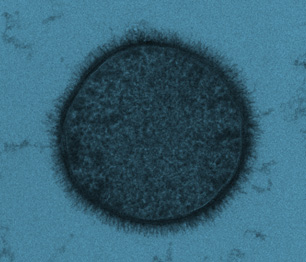Heterotrophic Bacteria (HPC)
| EPA Maximum Contaminant Level (MCL) |
500 colonies / mL |

Bacillus subtilis are heterotrophic bacteria found in the gut.
Heterotrophic bacteria (HPC) are naturally occurring bacteria which usually have no consequence for human health. Numerous studies, in fact, have shown them to be of no human consequence.
These bacteria are found in trace amounts in public and bottled water, as well as on fresh fruits and vegetables. They frequently inhabit the inner regions of water filtration equipment. They can grow in carbon beds, for example, and they may be found in reverse osmosis units downstream of the initial dechlorinating filter.
Although they may be a bit of an aesthetic nuisance, forming a slickness on the surface of filter cartridges, for example, they pose no threat to health.
In one study of HPC in reverse osmosis units, the authors concluded:
… there may be benefits to higher levels of heterotropic bacteria in drinking water. Rollinger and Dott present coincidental evidence that heterotrophic bacteria suppresses growth of coliforms and other enteric pathogens (7). In another study, inoculation of filters with three different pathogens resulted in no vigorous growth, and even an eventual die- off when dechlorinated tap water was being filtered (8). Thus, some evidence indicated there may be benefits to having heterotrophic bacteria populate filters.
Source: Heterotrophic Bacteria Control in a Residential Reverse-Osmosis Drinking-Water Filter, Journal of Environmental Health, Vol. 60, 1997, WikiMedia, author: Allonweiner
Site Index
Filtration Systems
- Aeration for Iron & Sulfide
- Backwashing Filters
(whole house & well units)
- Chlorine & Chemical Injectors
- Countertop Water Filters
- Garden Hose Filters
- Reverse Osmosis, Residential
- Reverse Osmosis, Commercial
- Shower Filters
- Specialty Filters
- Ultraviolet Systems
- Undersink Filters
- Water Softeners
- Whole House Filters
Cartridges
Parts
- Replacement Parts
- Faucets
- Filter Media
- Fittings
- Housings
- O-rings
- Pumps
- Pura UV
- R.O. Parts
- R.O. Tanks
- R.O. Booster Pump
- VIQUA UV